(315) Tour to see Wisteria (2)
文字数 3,654文字
The content of this time is also "Wisteria Tour", and here I'll introduce the wisteria trellises in the parks of Tsuchiura City one at a time. Dad numbered them sequentially as we walked through the parks.
We’ve seen 12 wisteria trellises in this chapter: 2 in Ottonuma Park, 1 in Ottonuma Aquatic Botanical Garden, 4 in Kijyo Park, and 5 in Kasumigaura Comprehensive Park.
The first wisteria trellis in Otto Park has hardly any flowers, so I’ll omit it and proceed to No.2.
At the same time, I’ll write about “Fuji Musume (Wisteria Maiden)”.
If you are not interested in "Fuji Musume", please skip the explanation below and proceed to Photo ③.
☆ ☆ ☆ ☆ ☆
[Fuji Musume] (Wisteria Maiden)
"Fuji Musume" is a dance in which a kabuki actor plays the role of a woman and changes kimono four times. In 1826, Seki Sanjuro II (二代目関三十郎) premiered "Fuji Musume" at Edo Nakamuraza (江戸中村座). It is said that if you are as beautiful as a wisteria flower and are amiable, you will get a good husband.
Photo① is "Fuji Musume" by Otsu-e from the Edo period.
Photo② is an ukiyo-e print of the first performance of "Fuji Musume" in 1826 at the Nakamuraza, in which Seki Sanjuro II (二代目関三十郎) played the role of Fuji Musume. This is a print by Utagawa Kunisada I(初代歌川国貞). It's amazing that there are still intact images from the premiere which happened 200 years ago when there were no smartphones.
One reference says:
"Fuji Musume was revised several times and the Shôwa stage giant Onoe Kikugorô VI created a new version in collaboration with the playwright Oka Onitarô, staged in March 1937 at the Kabukiza. In this more supernatural version, the maiden becomes the spirit of the wisteria tree. The dance opens in the dark, with the Nagauta ensemble playing. Then all the spotlights are suddenly turned on, in order to reveal the giant wisteria tree, the actor and the musicians on stage.
Fuji Musume is the visual climax of a Kabuki show, in which the dancer performing the role of the Wisteria Maiden changes kimonos four times and dances against a gorgeous backdrop of clusters of mauve and purple wisteria flowers. There is no story to speak of; the pleasure of the dance comes from the fast changes of costume which are performed on stage behind the trunk of a tree and the charming and alluring glances of the maiden as she expresses sentiments of love."
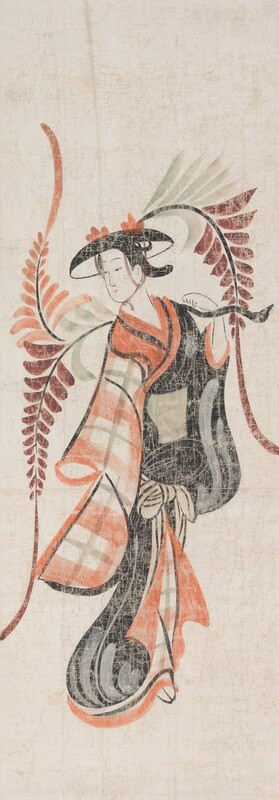
① Fuji Musume (Otsu-e, Edo period) Cleveland Museum of Art
Wisteria Maiden (Fuji Musume) 1615–99 The Cleveland Museum of Art
https://www.clevelandart.org/art/1963.96
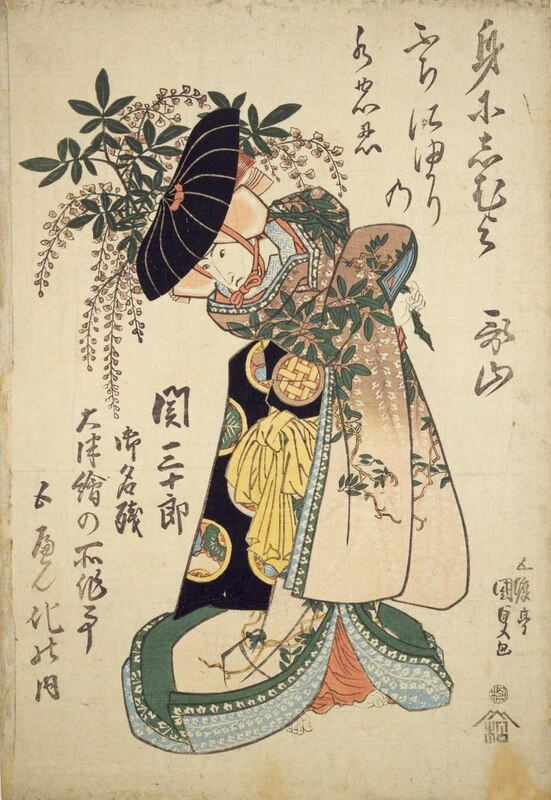
② Fuji Musume
Kunisada Gototei "(Fuji Musume)", Tatsuemon Matsumura.
☆ ☆ ☆ ☆ ☆ ☆
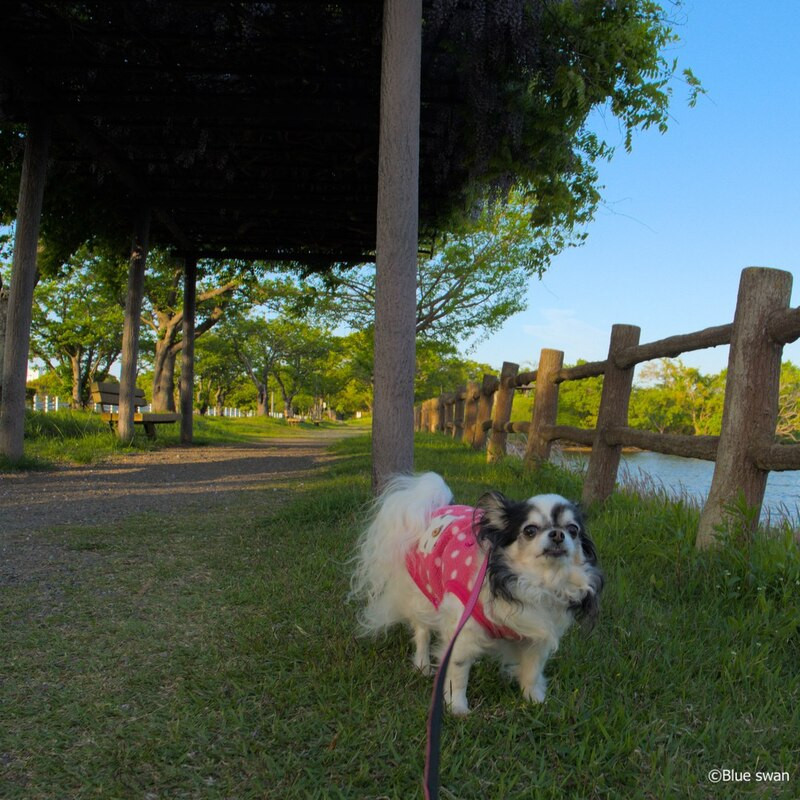
③ This is wisteria trellis No.2 in Ottonuma Park. It's dark and you can't see it well.
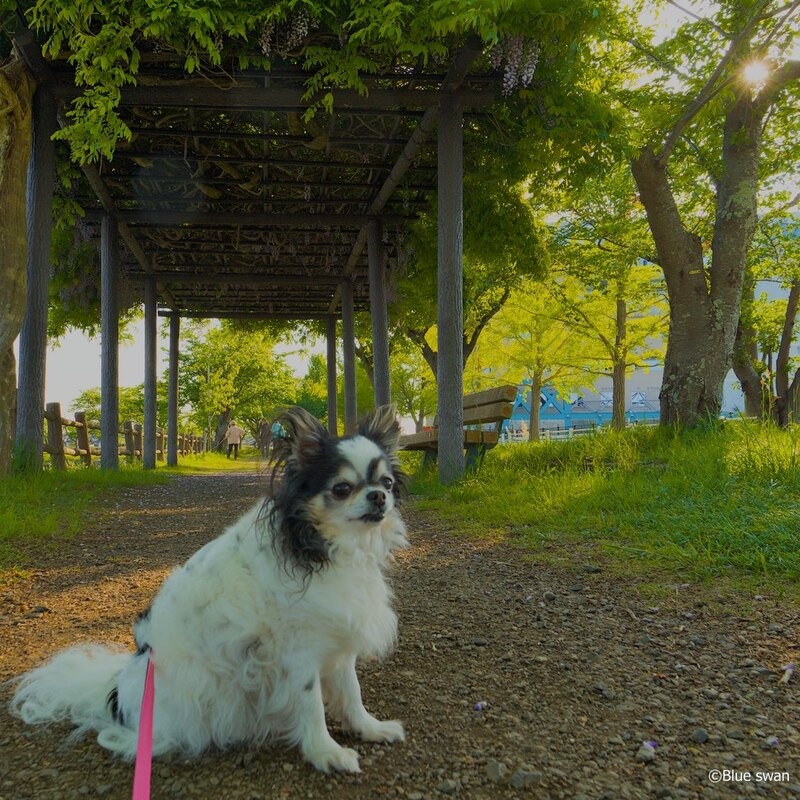
④ This is wisteria trellis No.2 seen from the other side. It isn’t clear here, either. (Ottonuma Park)
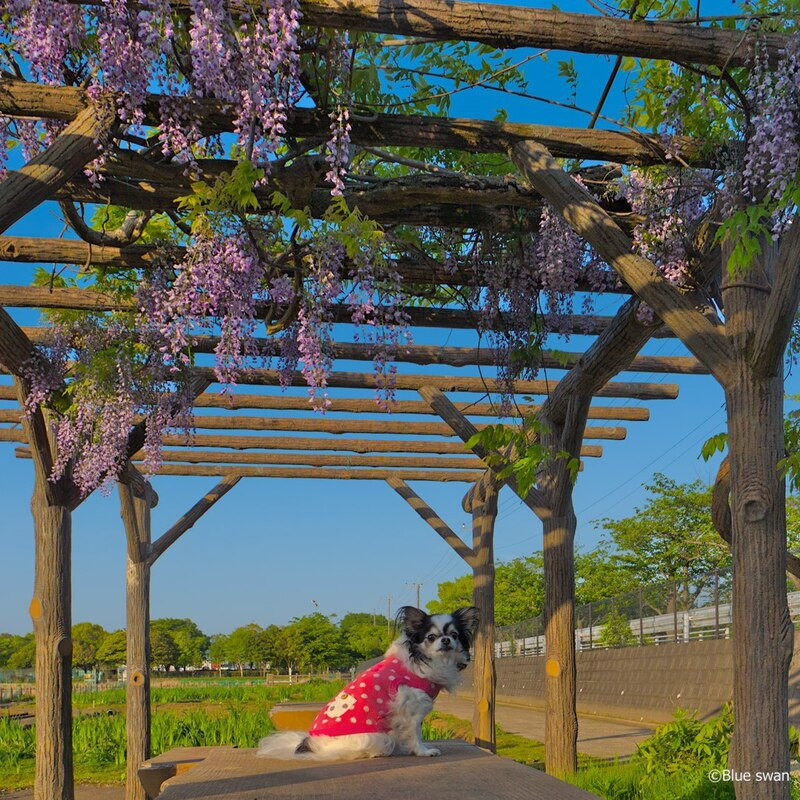
⑤ This is wisteria trellis No.1 at the Ottonuma Aquatic Botanical Garden.
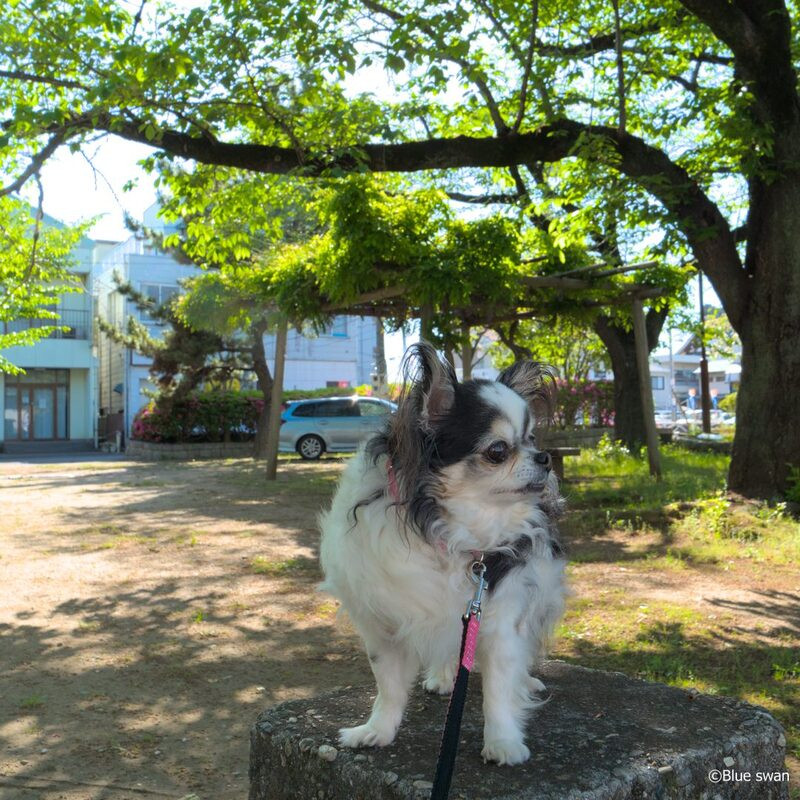
⑥This is wisteria trellis No.1 in Kijyo Park.
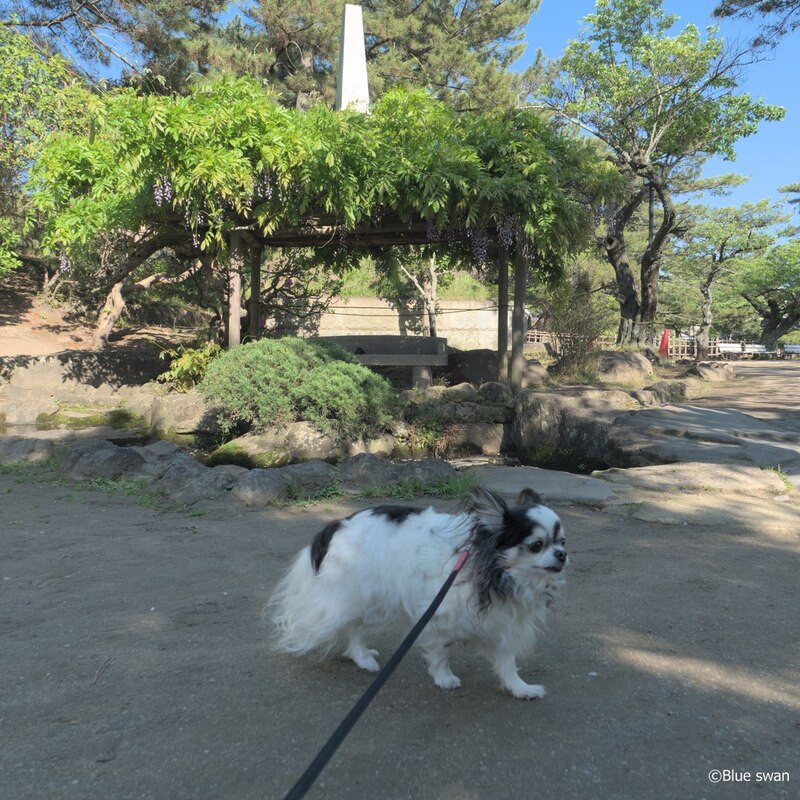
⑦This is wisteria trellis No.2 in Kijyo Park.
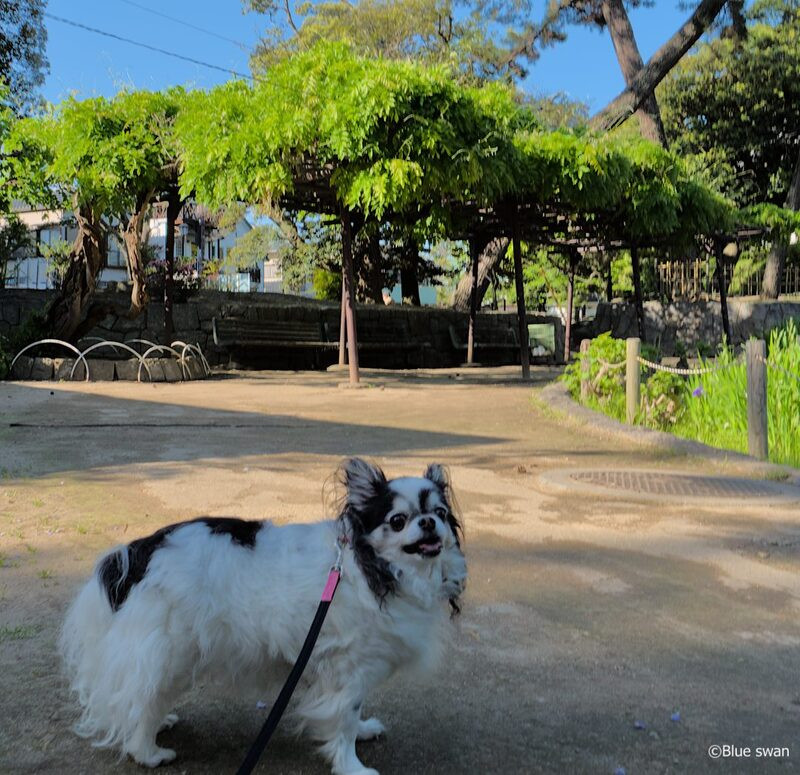
⑧This is wisteria trellis No.3 in Kijyo Park.
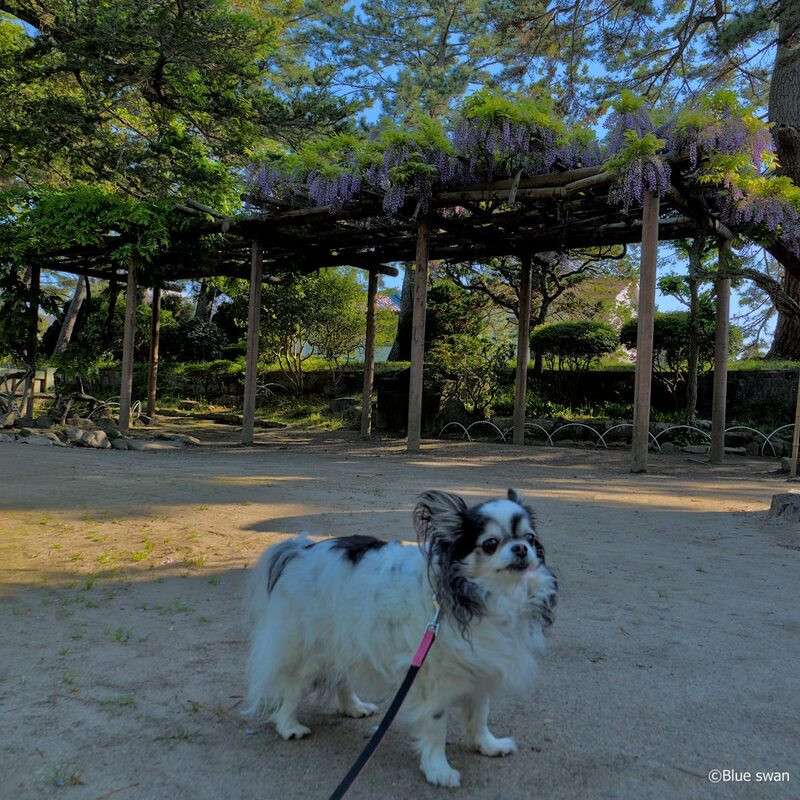
⑨This is wisteria trellis No.4 in Kijyo Park. In Kijyo Park, No. 4 blooms best.

⑩This is wisteria trellis No.1 in Kasumigaura Comprehensive Park. There are two trees, purple and white.
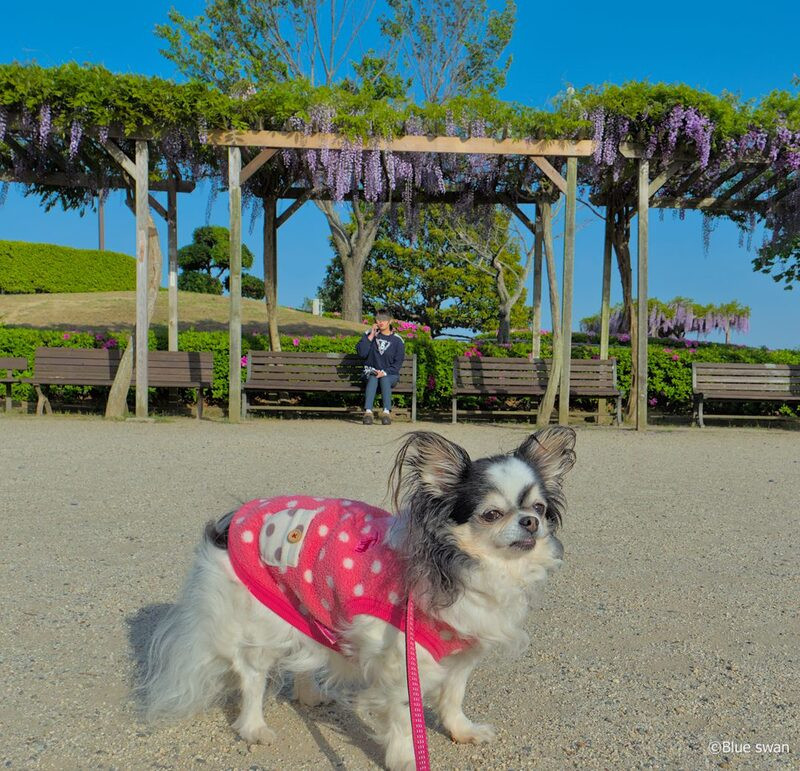
⑪This is wisteria trellis No.2 in Kasumigaura Comprehensive Park. You can also see wisteria trellis No.3 in the distance to the right.
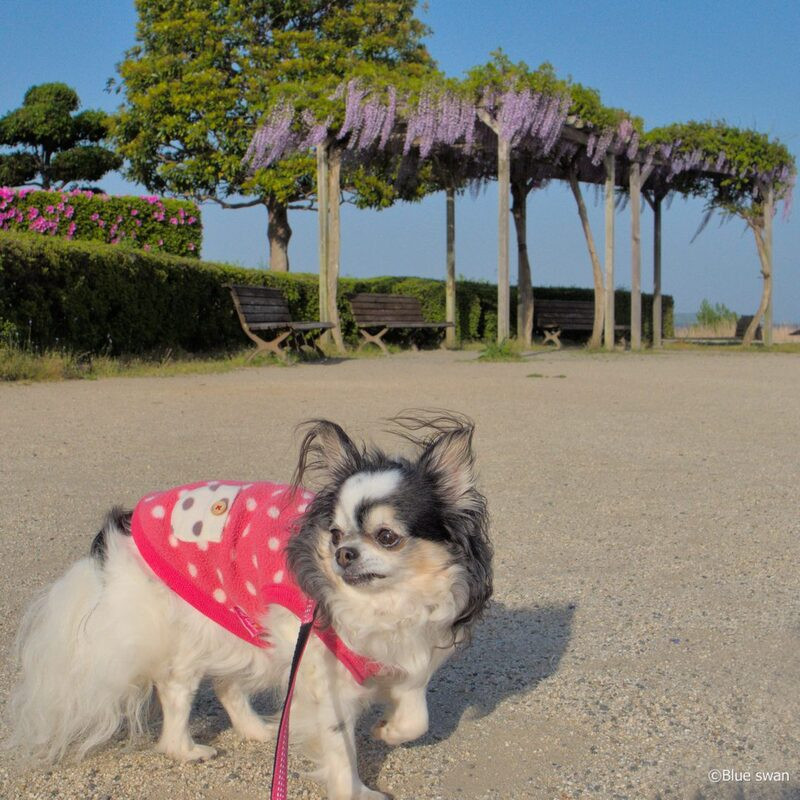
⑫This is wisteria trellis No.3 in Kasumigaura Comprehensive Park.
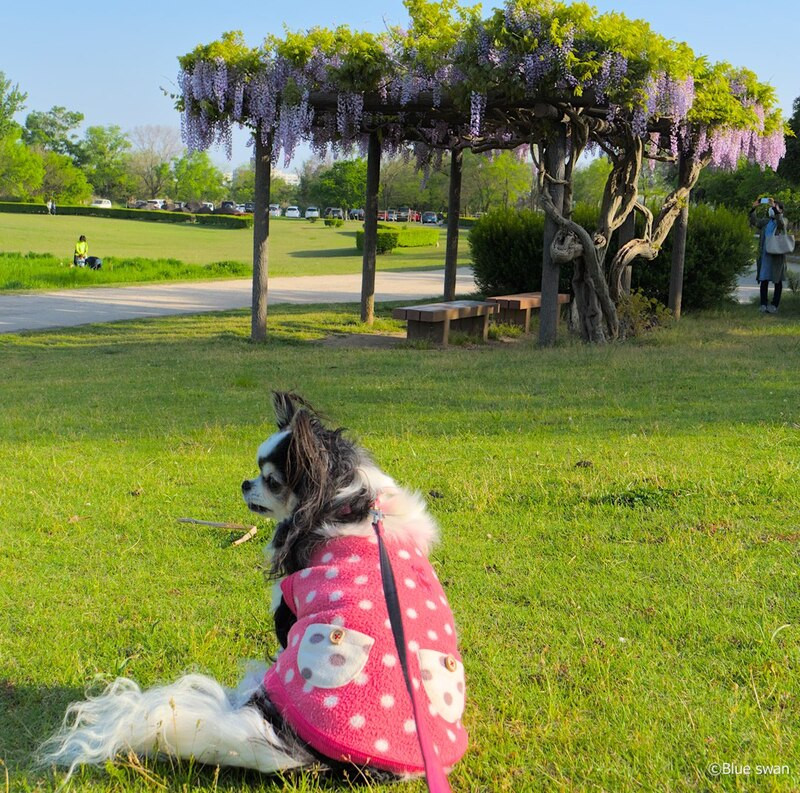
⑬This is wisteria trellis No.4 in Kasumigaura Comprehensive Park.

⑭This is wisteria trellis No.5 in Kasumigaura Comprehensive Park. All the wisteria in this park are in full bloom.
We’ve seen 12 wisteria trellises in this chapter: 2 in Ottonuma Park, 1 in Ottonuma Aquatic Botanical Garden, 4 in Kijyo Park, and 5 in Kasumigaura Comprehensive Park.
The first wisteria trellis in Otto Park has hardly any flowers, so I’ll omit it and proceed to No.2.
At the same time, I’ll write about “Fuji Musume (Wisteria Maiden)”.
If you are not interested in "Fuji Musume", please skip the explanation below and proceed to Photo ③.
☆ ☆ ☆ ☆ ☆
[Fuji Musume] (Wisteria Maiden)
"Fuji Musume" is a dance in which a kabuki actor plays the role of a woman and changes kimono four times. In 1826, Seki Sanjuro II (二代目関三十郎) premiered "Fuji Musume" at Edo Nakamuraza (江戸中村座). It is said that if you are as beautiful as a wisteria flower and are amiable, you will get a good husband.
Photo① is "Fuji Musume" by Otsu-e from the Edo period.
Photo② is an ukiyo-e print of the first performance of "Fuji Musume" in 1826 at the Nakamuraza, in which Seki Sanjuro II (二代目関三十郎) played the role of Fuji Musume. This is a print by Utagawa Kunisada I(初代歌川国貞). It's amazing that there are still intact images from the premiere which happened 200 years ago when there were no smartphones.
One reference says:
"Fuji Musume was revised several times and the Shôwa stage giant Onoe Kikugorô VI created a new version in collaboration with the playwright Oka Onitarô, staged in March 1937 at the Kabukiza. In this more supernatural version, the maiden becomes the spirit of the wisteria tree. The dance opens in the dark, with the Nagauta ensemble playing. Then all the spotlights are suddenly turned on, in order to reveal the giant wisteria tree, the actor and the musicians on stage.
Fuji Musume is the visual climax of a Kabuki show, in which the dancer performing the role of the Wisteria Maiden changes kimonos four times and dances against a gorgeous backdrop of clusters of mauve and purple wisteria flowers. There is no story to speak of; the pleasure of the dance comes from the fast changes of costume which are performed on stage behind the trunk of a tree and the charming and alluring glances of the maiden as she expresses sentiments of love."

① Fuji Musume (Otsu-e, Edo period) Cleveland Museum of Art
Wisteria Maiden (Fuji Musume) 1615–99 The Cleveland Museum of Art
https://www.clevelandart.org/art/1963.96

② Fuji Musume
Kunisada Gototei "(Fuji Musume)", Tatsuemon Matsumura.
☆ ☆ ☆ ☆ ☆ ☆

③ This is wisteria trellis No.2 in Ottonuma Park. It's dark and you can't see it well.

④ This is wisteria trellis No.2 seen from the other side. It isn’t clear here, either. (Ottonuma Park)

⑤ This is wisteria trellis No.1 at the Ottonuma Aquatic Botanical Garden.

⑥This is wisteria trellis No.1 in Kijyo Park.

⑦This is wisteria trellis No.2 in Kijyo Park.

⑧This is wisteria trellis No.3 in Kijyo Park.

⑨This is wisteria trellis No.4 in Kijyo Park. In Kijyo Park, No. 4 blooms best.

⑩This is wisteria trellis No.1 in Kasumigaura Comprehensive Park. There are two trees, purple and white.

⑪This is wisteria trellis No.2 in Kasumigaura Comprehensive Park. You can also see wisteria trellis No.3 in the distance to the right.

⑫This is wisteria trellis No.3 in Kasumigaura Comprehensive Park.

⑬This is wisteria trellis No.4 in Kasumigaura Comprehensive Park.

⑭This is wisteria trellis No.5 in Kasumigaura Comprehensive Park. All the wisteria in this park are in full bloom.
